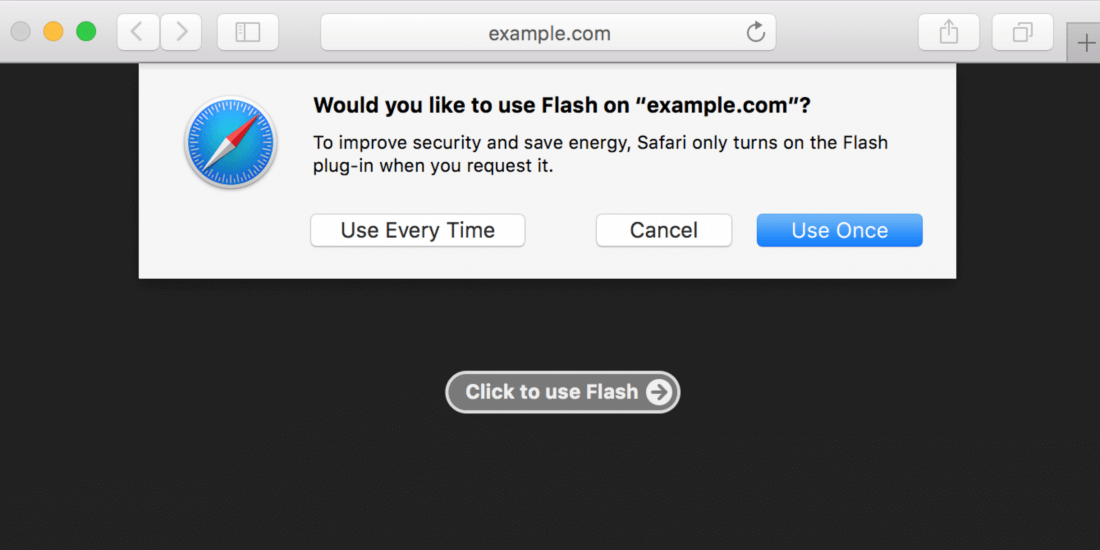By default, Apple's Safari doesn't include the ability to play Flash content unless you manually install the plug-in. It's no secret that the company would prefer websites to make the jump over to HTML5, which can handle most of the same tasks without the constant security problems. Now Apple is giving web developers yet another nudge to make them switch.
Starting with Safari 10 in macOS Sierra, Safari will begin blocking Flash across all websites even if you have the plug-in installed, requiring users to activate Flash on a page by page basis. Users can chose to activate only once (this is the default option) or every time. If you visit a website that has Flash and HTML5, Safari will automatically opt for the latter.
In a blog post, Apple developer Ricky Mondello argues that running HTML5 instead of plugins like Flash would bring users benefits like improved performance and battery life.
Also read: Check if Adobe Flash is installed, then get rid of it
Apple is not just singling out Adobe, however. Other browser plug-ins including QuickTime, Silverlight and Java will be blocked by default and require the user's permission to run.
Like Apple, Microsoft, Google and Mozilla have been distancing themselves from Flash too. Google's Chrome browser has already started blocking Flash ads, and will start blocking Flash by default later this year except for several major websites – the big difference here is that Chrome comes with the Flash plug-in pre-installed and will continue to automatically update to the latest version. Meanwhile, Edge only displays Flash if it's a central element on the page you're looking at, and Mozilla blocks versions of Flash with known security vulnerabilities.
